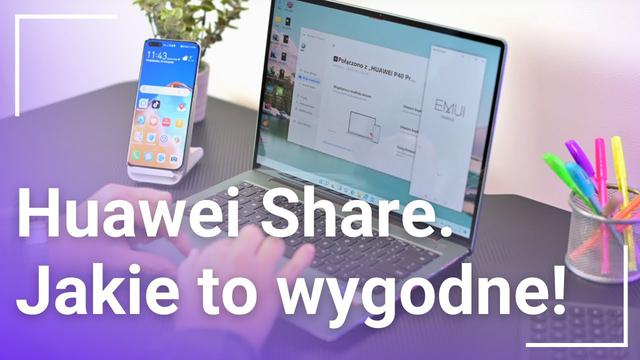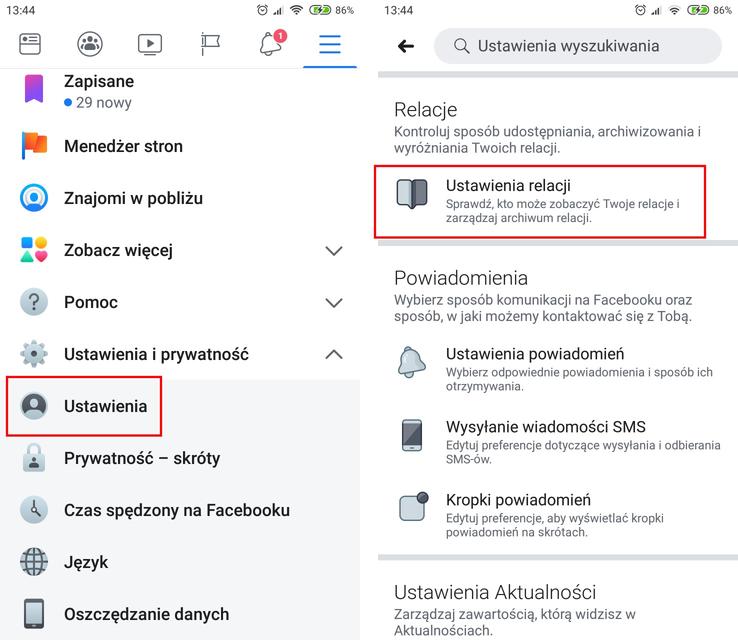Monitor to urządzenie, z którego dziennie korzystam znacznie więcej niż z telewizora i telefonu razem wziętych. Narzędzie pracy i zarazem zabawy. Zapewne was zatem nie zdziwi, że sporo od niego wymagam. Huawei MateView w teorii doskonale wpisuje się w moje zapotrzebowanie – a jak jest w rzeczywistości?
Let's start as usual from the beginning
Mateview is delivered by Huawei in a huge box, containing a monitor, 100 W power supply with USB-C plug and USB-C cables and minidisplayPort.However, there was no popular HDMI.
The screen, along with the base, form the whole and do not require mounting after removing from the box - thanks to this the device is ready to work in literally a few moments, as much as you need to connect the power supply and signal source.
ReklamaHuawei Mateview in Media Expert
The monitor's feet has a place for a pair of microphones and stereo speakers with a capacity of 5 in each, as well as for connection sockets-there are quite a lot of them: MinidisplayPort, HDMI and used to power USB-C on the back and 2 x USB, USB-C and mini-jack audio on the right edge.
The integrated design with a narrow frame is very slender and aesthetic, but it also has disadvantages: you can not display the display from the leg and hang on the shoulder with VESA assembly, the manufacturer did not think about the useful time at Pivota's work.
Parameters
The price as at the date of publication of the review is PLN 2999.
A few words about the matrix
The heart of the monitor is an IPS matrix with a diagonal of 28.2 ″ and unusual proportions 3: 2.The resolution of the displayed image is 3840 x 2560 with a refreshing of 60 Hz with a connection by MiniDisplayPort / USB or 50 Hz when connected by HDMI.
These additional 400 pixels vertically, compared to the most common 16: 9 monitors, are contrary to appearances quite a lot - especially when writing the text, but it is also the ability to display a full -screen preview of the photo - typical proportions of photos from SLR and MAZLESTOR are 3: 2.
The maximum brightness according to the manufacturer's data is about 500 rivets.The provisional measurement of the Lightmeter application gave the center a lower result: 364 Nit.The peripherals were even less, 319 rivets in the upper right corner and a maximum of 340 thread in the lower right - I am willing to consider these results true, because in the case of my private monitor (Acer Prodesigner PE270K), the measurements obtained using the program coincided with declarations more or lessproducer's.It gives a difference of 12%, or "not great, not terrible".Just for home applications.
It is worth looking at the backlight well when buying, because only the second copy of the monitor provided by Huawei worked properly: the first was characterized by the difference between the lightest and darkest point of 36 % (444 Nit / 283 Nit, i.e. it was ~ 160 rivet) and was visible at the firstglance.The problem had to be stuck in a defective or poorly mounted diffuser, because the brightest image was downstairs, where the straw is mounted, and the darkest at the top edge of the screen.
While you can have allegations to the uniformity of the backlight, the color reproduction is at a high level.The measured color temperature of white was 6580k.Declarations by 100% SRGB and 98% DCI-P3 seem to be fulfilled-for most of the tests I used Mateview and Prodesigner (they have theoretically similar possibilities in this matter) in a dual-mono configuration and after selecting the Mateview DCI-P3 profile in the Mateview menu, colors betweenBoth devices were indistinguishable to the naked eye - that is, on two different devices it was possible to create a coherent job for work, even with photos, of course at the level of advanced amateur.
Work and fun
Huawei Mateview supports HDR at HDR400 level.With a not very high maximum brightness, the monitor copes with materials with a wide tonal span rather on average - definitely not matching TVs and in my opinion it is not worth using HDR support when choosing it.Despite this, HDR movies from Netflix could be watched quite pleasantly, which I can't say about a few other devices with theoretically similar possibilities.
Mateview, on the other hand, is poor in games - the additional resolution is an additional 1.536 million pixels for rendering compared to typical UHD monitors, and this is even more raising and so high GPU requirements set.In addition, a 60 Hz matrix without even a trace of freesinc or G-Sync service, with a fairly slow pixel switching and without overdrive will not satisfy a more demanding player, especially playing dynamic FPS.
Work, however, is a different and much better fairy tale.As I have already mentioned, the additional space works great when writing texts, browsing websites (most of them are a narrow vertical strap in the middle of the screen) and when processing photos - both when Mateview was the main device, and when he served for full -screen preview inCapture One Pro and Lightroom.
Only the lack of pivot is surprising - some things are more convenient to do at the monitor working vertically and Mateview with his proportions, he would incredibly gain utility.
The added value is the possibility of wireless work.The monitor is able to cooperate in this way with Windows and smartphones.The NFC tag is hidden in the stand, allowing the automatic configuration of Huawei smartphones to work with the display, but I also easily used Dex mode in Samsung Galaxy with Fold 3 - but that the monitor had to be indicated manually.
Initially, it was not clear, but Mateview simply supports the Miracast protocol with extensions, so in theory any compatible device can make a connection with it.As far as he succeeds - wireless communication worked for a moment during the tests, later it stopped, after restoring the factory settings, it worked at the time of connection with the laptop during the photo session, and after disconnecting refusal to refuse further cooperation - that's why I will not show you, unfortunately, what the cooperation with the fold looked like3.
DEX cooperation with Fold 3 or Desktop Mode mode with P40 Pro with Mateview leaves a lot to be desired when it works and it is difficult to treat this function as something more than a curiosity.Both smartphones at wireless work generate a picture with Full HD resolution and 16: 9 aspect ratio, which is scaled to the screen and therefore not only very sharp, but also unnaturally stretched.The image delay at wireless work is clearly noticeable.
During wireless operation, smartphones serve as a keyboard and touchpad - it sounds great, but it is very, very uncomfortable.In theory during the cooperation of the monitor with devices working under the control of EMUI 11 or Harmonoos, the monitor is able to redirect the movements of the mouse to the smartphone, but somehow it did not want to work for anything.
Mateview will gain practicality in cooperation with a tablet with a physical keyboard and a trackpad, but I don't really see a more serious work on such a set, if the software is not radically improved.
The method of controlling the Huawei Mateview functions has been solved quite unusual.Manufacturers have accustomed users that the operation is usually done using a few buttons or buttons and mini joysticks.In Mateview, a touch strip under the screen is used to operate, working with a fairly transparent, but very simplified menu.
The idea is quite good, though going against the habits, but the performance is weaker.The belt sometimes reacts as he wants - once it is too tender, and at other times a knocking is either received with a delay, or does not cause any reaction at all.
It remains to be hoped that the manufacturer will try to update firmware that solves problems with wireless work and control.On the plus side, it should be included that the monitor can update automatically.
Summary
I have to admit that Huawei Mateview may be liked.It stands at a very good level and catches the eye, and I liked the unusual proportions of the screen during work.The colors are very decent and well calibrated.Unfortunately, in places the design won with utility (where is Pivot and Vesa's assembly, I am asking), and the underdeveloped firmware and the chimeric operation of wireless communication does not help.The quality of the sound coming out of the speakers is very average, and the uniformity of the backlight in this price category could be a bit better.
So is Huawei Mateview worth buying?It depends.If we are looking for a monitor with photographic proportions and good colors - rather yes, because Mateview does not have much competition at this price.It is not worth focusing on wireless cooperation, however, also players should look for equipment better suited to their needs.
Recenzja Huawei MateView – 28 cali klasy premiumZaletywysoka rozdzielczośćfotograficzne proporcje 3:2wzornictwowąskie ramki, ułatwiające pracę wielomonitorowąbardzo przyzwoita kalibracja i kolorywbudowany zasilacz USB PD3 65 Wpo podłączeniu do WiFi monitor ma możliwość automatycznej aktualizacji firmwareWadybrak pivotabrak montażu VESArównomierność podświetlenia mogłaby być lepszabardzo przeciętna jakość dźwiękuniewygodne sterowanieproblemy z połączeniami bezprzewodowyminiedopracowany firmwarebrak FreeSync i Overdrivecena7.5OcenaGdzie kupić?Media Expert

